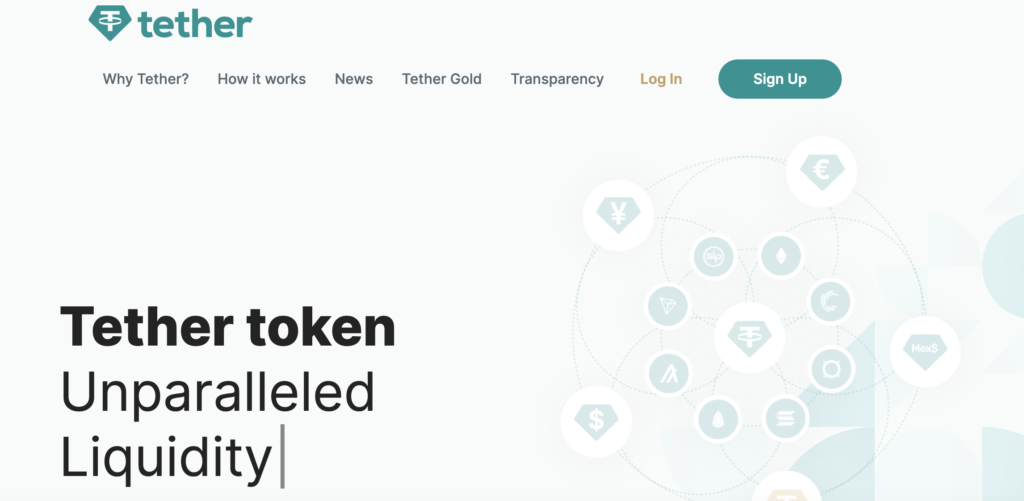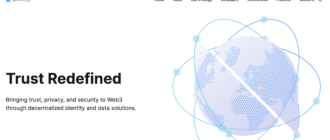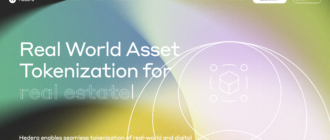Tether USDt, commonly referred to as USDT, stands as a cornerstone of the cryptocurrency world, providing a bridge between traditional fiat currencies and the rapidly evolving digital currency space. USDT is a stablecoin, designed to maintain a 1:1 peg with the U.S. dollar, offering the stability of fiat along with the technological advantages of a digital token.

History of the Project
Developed and first issued in 2014 by Tether Limited, USDT was one of the first cryptocurrencies to peg its market value to a fiat currency, primarily to mitigate the extreme volatility seen in the cryptocurrency markets. The project was founded by a group including Brock Pierce, Reeve Collins, and Craig Sellars. Over the years, Tether has expanded across various blockchains including Bitcoin (via the Omni and Liquid Protocols), Ethereum, EOS, Tron, Algorand, and others, thereby increasing its interoperability and usage.
What is Tether USDt?
Tether USDt aims to combine the best of both worlds: the immediate processing and security of cryptocurrency transactions, and the stable valuations of fiat currencies. It serves as a digital dollar—the concept being each USDT token is backed by a corresponding U.S. dollar held in Tether’s reserves, theoretically enabling users to transact with traditional currency across the crypto infrastructure.
Distinctions Between USDT, USDC, and DAI
Tether USDt (USDT), USD Coin (USDC), and DAI are among the most prominent stablecoins in the cryptocurrency market, each with unique features and operational frameworks. Understanding these distinctions is crucial for users making informed decisions in their cryptocurrency engagements.
USDT (Tether USDt)
- Backing: USDT is purportedly backed by the equivalent amount of U.S. dollars and potentially other assets like commercial paper, held in reserves by Tether Limited. Regular transparency reports are issued to prove these holdings.
- Blockchain Diversity: One of Tether’s strengths is its availability across multiple blockchain networks, including Ethereum, Tron, Omni, EOS, and Algorand, which offers users flexibility in terms of transaction speeds and costs.
- Regulatory Scrutiny and Transparency Issues: Historically, Tether has faced significant scrutiny regarding the transparency and actual backing of its tokens. Although it has made strides in improving transparency, the extent and quality of its audits have been a point of contention.
USDC (USD Coin)
- Backing: USDC claims to be backed exclusively by U.S. dollars held in segregated accounts under regular auditing by independent entities. This approach has instilled greater trust regarding its backing compared to USDT.
- Blockchain Platforms: USDC operates mainly on Ethereum and has expanded to other blockchains like Algorand, Stellar, and Solana, although it does not match USDT’s diversity in blockchain support.
- Regulatory Compliance: USDC is known for its strong commitment to regulatory compliance and transparency, appealing particularly to institutional users and partners seeking stablecoin services that align closely with traditional financial regulations.
DAI (Decentralized Autonomous Organization)
- Decentralized Backing: Unlike USDT and USDC, DAI is backed by a mix of other cryptocurrencies deposited into smart contract vaults, rather than by fiat in bank accounts. This structure supports a higher degree of decentralization.
- Overcollateralization: To maintain its peg, DAI is overcollateralized, meaning the value of the cryptocurrency held as reserves exceeds the value of DAI in circulation. This helps buffer against volatility in the crypto market.
- Governance: DAI is governed by the MakerDAO protocol, where decisions regarding the specifics of the backing assets and their risk parameters are made by MKR token holders, enhancing community-led governance and transparency.
How Tether USDt Works
Tether USDt’s technology is constructed atop several major blockchain platforms, utilizing the unique features of each to enhance functionality and interoperability. Initially launched on the Bitcoin blockchain through the Omni Layer, a platform for creating and trading custom digital assets and currencies, it allowed Tether to leverage Bitcoin’s security while implementing additional features like the issuance of custom tokens.
Blockchain Integration
- Omni Layer on Bitcoin: As the initial protocol, the Omni Layer supports the creation of custom tokens, in this case, USDT. The security derives from the underlying Bitcoin blockchain, utilizing its hashing power and distributed ledger technology. The consensus on this layer follows Bitcoin’s Proof of Work (PoW) mechanism, where miners validate transactions and secure the network by solving complex mathematical problems.
- Ethereum and ERC-20 Tokens: A significant shift occurred when Tether adopted the Ethereum blockchain, making use of the ERC-20 standard for USDT. This move expanded Tether’s capabilities by incorporating smart contracts, which automate transactions and enforce agreements without the need for intermediaries. Ethereum operates on a different consensus algorithm, initially Proof of Work, and as of September 2022, it has transitioned to Proof of Stake (PoS). This change aims to reduce energy consumption and increase transaction throughput.
- Other Blockchains: Further diversification came with expansions onto blockchains like Tron, EOS, and Algorand, each chosen for their distinct advantages in transaction speed, cost, and scalability. For instance, Tron offers high throughput and effective smart contract capabilities suitable for frequent, small transactions. Algorand’s Pure Proof of Stake (PPoS) consensus mechanism enhances speed and immediate transaction finality without the intensive computational power required by traditional PoW systems.
Unique Technological Innovations
Unlike typical cryptocurrencies that fluctuate in value, Tether’s USDT is a stablecoin pegged to the U.S. dollar, aiming to maintain a constant value equivalent to the dollar. This peg is achieved through a reserve of assets that theoretically match the number of USDT in circulation, audited and reported to maintain trust and reliability. The technological differentiation lies not just in the blockchain technology used but in the operational model that combines transparency, multi-blockchain interoperability, and the maintenance of a stable economic environment.
Consensus Mechanisms and Technical Details
Each blockchain Tether operates on has its consensus model, affecting how transactions are validated:
- Bitcoin’s PoW: Ensures immutability and security but at higher energy costs and lower transaction speeds.
- Ethereum’s PoS (after the Merge): Reduces energy usage and potentially increases the number of transactions per second, making it more scalable and environmentally friendly.
- Tron’s Delegated Proof of Stake (DPoS): Allows for faster and more energy-efficient transaction processing by using stake-weighted voting to achieve consensus among a smaller group of delegates.
- Algorand’s PPoS: Ensures full participation, protection, and speed within a decentralized network, promoting fairness and inclusivity in the consensus process.
Each technology stack and consensus mechanism was chosen to enhance USDT’s utility across different environments, ensuring that it remains accessible, fast, and cost-effective for various uses in the digital economy. This multi-chain strategy significantly sets Tether apart from other stablecoins that might be limited to a single blockchain or less flexible in operation and integration.
Tokenomics of Tether USDT
Token Classification
Tether USDT, classified as a token rather than a coin, operates not as its own blockchain but as a digital asset issued on top of other pre-existing blockchains such as Bitcoin (via the Omni and Liquid Protocols), Ethereum, Tron, and others. This distinction is crucial as it highlights USDT’s role as a stablecoin designed to leverage the security and technological infrastructure of established blockchains while providing a stable value pegged to traditional fiat currencies.
Emission Model and Backing
The emission of USDT tokens is unique because it does not follow a mining or staking-based issuance typical of many cryptocurrencies. Instead, new tokens are created in response to market demand and are issued in direct correlation to the amount of U.S. dollars Tether claims to hold in its reserves. This means that for every USDT issued, there is an equivalent amount of USD held, thereby maintaining the peg at 1:1. The reserves are meant to include traditional fiat currencies and potentially other assets and receivables from loans issued by Tether to third parties.
Peg Maintenance and Currency Stability
USDT’s peg to the USD is maintained through active market management techniques. Tether Limited, the entity behind USDT, ensures that the token’s value remains tied closely to the U.S. dollar through open market operations, akin to methods used in traditional fiat currency markets. This involves the redemption and issuance process, where Tether directly responds to increase or decrease in demand by respectively issuing more tokens or buying them back and removing them from circulation.
Financial Transparency and Audit Practices
The issuance process’s integrity heavily relies on the transparency and regular auditing of the reserve holdings. Tether periodically publishes transparency reports to show proof of reserve, which is crucial for maintaining user and investor trust. These reports are intended to verify that the number of USDT in circulation is adequately backed by USD assets, addressing one of the most critical aspects of Tether’s operation.
Exchange Rate Stability
Because USDT is designed to be pegged to the U.S. dollar, its exchange rate against the dollar remains relatively stable, fluctuating minimally in typical market conditions. This stability is what makes USDT a favored medium for traders and investors seeking to avoid the extreme volatility commonly associated with cryptocurrencies. However, minor deviations can occur, which are usually corrected swiftly through market mechanisms or direct interventions by Tether.
Where to Buy USDT
Tether USDt can be purchased on several major cryptocurrency exchanges, each offering robust trading platforms with various trading pairs, including fiat-to-crypto and crypto-to-crypto transactions. Here is a list of notable exchanges where USDT is available:
- Binance: As one of the largest and most popular cryptocurrency exchanges globally, Binance offers extensive trading pairs for USDT, including against major cryptocurrencies and numerous fiat currencies. Binance is known for its high liquidity, making it an ideal platform for both new traders and experienced investors.
- HTX (formerly Huobi): HTX is a well-established exchange that provides a wide range of USDT trading pairs. Known for its strong security measures, HTX is a popular choice among users in Asia and globally.
- MEXC: This exchange offers a variety of USDT pairs and is known for its user-friendly interface and quick transaction speeds. MEXC also provides options for futures and margin trading with USDT.
- Bybit: Known for its derivatives and futures trading, Bybit also offers spot trading for USDT. It is favored for its advanced trading features and competitive trading fees.
- KuCoin: KuCoin supports a broad selection of USDT trading pairs and is renowned for listing a wide variety of altcoins. This makes it a popular choice for traders looking to explore new and emerging cryptocurrencies.
- Bitfinex: As one of the oldest crypto exchanges, Bitfinex offers advanced trading options for USDT, including margin trading. It is known for its deep liquidity and professional trading features.
Where to Store Tether USDt
When it comes to storing USDT, users have a variety of wallet options that cater to different needs, from high security to convenient access:
- Hardware Wallets: For maximum security, hardware wallets such as Ledger Nano S/X and Trezor offer offline storage that protects your USDT from online threats. These devices support multiple blockchains, ensuring that USDT stored via different protocols can be securely managed.
- Mobile Wallets: Mobile wallets provide a convenient way to manage and spend USDT on the go. Trust Wallet and Exodus are popular choices that support multiple cryptocurrencies including USDT across its various blockchains.
- Web Wallets: For those who prefer accessibility from any device, web wallets like MetaMask and MyEtherWallet can be used to store USDT issued on the Ethereum blockchain. These wallets are easy to use but require careful management of private keys and security settings to ensure safety.
- Exchange Wallets: Storing USDT directly on the exchange where it was purchased, like Binance or KuCoin, offers convenience, especially for active traders. However, it’s important to use exchanges with robust security measures and to be aware of the risks associated with not holding your private keys.
Each storage option offers different features that cater to various needs and preferences, whether prioritizing security, convenience, or quick access for trading. Users should consider their specific requirements and risk tolerance when choosing where to store their USDT.
Advantages and Disadvantages of Tether USDt (USDT)
Advantages of USDT
- Market Stability: USDT provides a stable value storage solution, shielding users from the high volatility typically associated with cryptocurrencies. This makes it a valuable tool for traders looking to hedge against market volatility, manage portfolio risk, or park funds during uncertain market conditions.
- High Liquidity: Tether enjoys widespread adoption across major cryptocurrency exchanges, offering high liquidity for traders. This ubiquity allows for easy entry and exit points in trading and facilitates swift cross-border transactions without the traditional banking system’s fees and time constraints.
- Interoperability Across Multiple Blockchains: USDT operates on several blockchains including Ethereum, Tron, Omni, Algorand, and others. This multi-chain presence ensures that users can leverage the specific advantages of each blockchain, such as lower transaction fees on Tron or faster transactions on Algorand.
- Utility in the Crypto Ecosystem: Beyond trading, USDT is used for a range of activities including remittances, payments, and as a stablecoin in decentralized finance (DeFi) applications. It serves as a base pair for many altcoins, enhancing liquidity and market efficiency.
Disadvantages of USDT
- Transparency Issues: Despite improvements, there remains skepticism about the full transparency of the assets backing USDT. Past controversies over whether the issued tokens were fully backed by equivalent U.S. dollars have led to ongoing trust issues within the crypto community.
- Regulatory Risk: USDT has been under the microscope of regulatory bodies, including a notable investigation by the New York Attorney General. These legal challenges reflect the broader uncertainty regarding the regulatory landscape for stablecoins, which could impact Tether’s operations and user confidence.
- Dependence on Reserve Management: The value of USDT is closely tied to the management of its reserves. Any mismanagement or inaccuracies in the reported value of these reserves could lead to financial instability and affect its ability to maintain the peg to the U.S. dollar.
- Competitive Pressure: The rise of other stablecoins, such as USDC and DAI, which offer greater transparency or decentralization, poses significant competition to USDT. These competitors are increasingly favored by users and institutions seeking alternatives with clearer compliance and governance structures.
Challenges and Criticisms of Tether USDt
Tether USDt (USDT) plays a significant role in the digital currency landscape but has not been without its controversies and challenges. The primary issues center around transparency, asset backing, and regulatory scrutiny.
Transparency and Asset Backing
One of the most persistent criticisms of Tether is related to the transparency and the actual backing of its tokens. Tether claims that each USDT is backed 1:1 by U.S. dollars; however, doubts have been raised about this claim and the composition of the reserves. Over the years, Tether’s disclosures have revealed that its reserves may not be entirely composed of cash but also include other assets such as commercial paper, secured loans, corporate bonds, and other non-fiat investments. This revelation has led to concerns about the liquidity and risk profile of the assets backing USDT.
The composition and sufficiency of these reserves have been called into question, particularly during market downturns or when large amounts of USDT are redeemed in a short period. The fear is that if many holders were to simultaneously redeem their tokens, Tether might not be able to provide all the necessary liquidity, which could lead to a de-pegging of USDT from the dollar.
Regulatory Scrutiny
Tether has also faced significant regulatory scrutiny. Various regulatory bodies, including the New York Attorney General (NYAG), have investigated Tether and its associated exchange, Bitfinex. The investigation by the NYAG culminated in an $18.5 million settlement in 2021, with Tether admitting to no wrongdoing but agreeing to increase its transparency. Part of the settlement included requirements for Tether to offer public reports on its reserves, which was intended to provide greater transparency.
Legal and Compliance Issues
The legal landscape for cryptocurrencies and stablecoins continues to evolve, and Tether has had to navigate these changes amid increasing attention from regulators worldwide. Compliance with differing regulations across jurisdictions can be challenging, as these regulations may impact how Tether operates or how it is able to interact with traditional financial institutions.
Future Prospects and Development Forecast
Growth Drivers
The growth of Tether USDt is anchored in its fundamental role as a bridge between fiat currencies and cryptocurrencies. Its stability and wide acceptance make it an indispensable tool for traders, institutions, and casual users aiming to manage volatility in the crypto market.
Client Base: Tether’s primary users include:
- Cryptocurrency Exchanges: Virtually all major platforms use USDT for liquidity and as a trading pair.
- Institutional Investors: These clients use USDT for large scale, cross-border transactions and as a hedge against crypto market volatility.
- Retail Users: Individuals leverage USDT for remittances, payments, and as a stable store of value.
Partnerships: Tether has forged partnerships with various financial institutions and payment gateways, enhancing its usability and integration into the financial ecosystem. Some notable partnerships include:
- Integration with Payment Processors: Such as Circle and Coinbase, which facilitate the use of USDT in broader commercial transactions.
- Collaborations with DeFi Platforms: Like Compound and Aave, where USDT is used in lending and borrowing protocols.
Development Forecast
The future development of Tether is likely to focus on increasing its transparency and regulatory compliance, which are critical for maintaining user trust and satisfying global financial regulations. Moreover, Tether’s expansion into newer blockchain ecosystems and possibly into the emerging sectors of digital finance like CBDCs (Central Bank Digital Currencies) could be pivotal. The ongoing development of the digital asset regulatory framework in major markets, such as the USA and the EU, is expected to significantly influence Tether’s operational strategy and market positioning.
Ecosystem of Tether USDt
Tether’s ecosystem is vast and includes several key components that contribute to its utility and appeal:
- Multiple Blockchain Networks: Including Ethereum, Tron, Omni, EOS, and Algorand, which ensure that USDT can operate across different environments and cater to various user preferences regarding transaction speed and costs.
- DeFi Integrations: USDT is widely used in the DeFi sector for activities like staking, lending, and liquidity provisioning, integrating with protocols across these blockchains.
- Stablecoin Platforms: Platforms that specifically cater to stablecoin operations, offering services like token swaps, stablecoin-specific wallets, and financial services.
- Payment Services: Partnerships with payment gateways that allow merchants to accept USDT as payment, facilitating its use in everyday commerce.
In conclusion, Tether’s strategic importance in the cryptocurrency market, combined with its expanding ecosystem and continuous efforts to enhance regulatory compliance and transparency, paints a promising picture for its future. As the digital finance landscape evolves, Tether’s role as a stable and reliable intermediary is expected to become even more significant, driving further adoption and integration across financial sectors.
Conclusion
As the crypto landscape evolves, Tether USDt remains at the forefront, pivotal in shaping how traditional and digital finance converge. Its technological infrastructure, widespread integration, and role as a stable intermediary in volatile markets underscore its importance and continuing relevance in the broader financial ecosystem. For advanced users and investors, understanding Tether’s operational mechanics, governance, and strategic potential is crucial for navigating the complexities of the crypto world.






